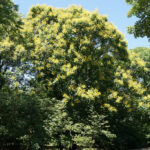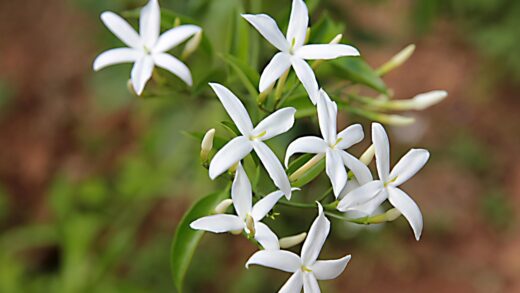Understanding the natural water cycle
To truly grasp the watering needs of the English bluebell, one must first appreciate the hydrological cycle of its native woodland habitat. These environments are characterized by moist, humid conditions, particularly in spring when the bluebells are in their active growth phase. The dense canopy of deciduous trees is not yet in full leaf, allowing spring rains to penetrate directly to the forest floor, where a deep layer of leaf litter acts like a sponge, soaking up and retaining moisture. This creates a consistently damp but not waterlogged soil profile, providing the perfect conditions for the bluebells to thrive. It is this specific balance of consistent moisture and good drainage that we must seek to replicate in a garden setting.
The annual rhythm of rainfall and moisture availability in a woodland is key. Spring is typically a wet season, providing ample water to fuel the rapid growth of the leaves and the development of the flower stalks. As the season progresses into summer, the tree canopy becomes fully developed, intercepting a significant portion of the rainfall. This, combined with higher temperatures, leads to a drier soil environment. The bluebells have adapted perfectly to this cycle by entering a state of dormancy, their growth for the year completed. This natural drying-out period during summer is crucial for preventing the bulbs from rotting.
In autumn, as leaves begin to fall and temperatures cool, rainfall increases once more. This returning moisture permeates the soil and signals the dormant bulbs to awaken and begin producing new roots. This period of autumn root growth is vital, as it anchors the plant and prepares it for the burst of energy required for the following spring’s display. Throughout the winter, the soil generally remains cool and moist, protecting the bulbs and their developing root systems. The consistent, low-level moisture prevents them from desiccating before the arrival of spring.
Therefore, the goal of any irrigation strategy in the garden should be to mirror this natural ebb and flow. This means providing consistent moisture in the spring, allowing for a drier period in the summer, and ensuring the soil doesn’t become bone-dry in the autumn and winter. It is a nuanced approach that moves beyond a simple, fixed watering schedule and instead responds to the plant’s lifecycle and the prevailing weather conditions. By understanding this natural template, you can provide water when it is most needed and withhold it when it could be detrimental.
Watering during the growing season
The spring growing season, from the moment the first shoots emerge until the foliage begins to fade, is the most critical period for water. During these few months, the English bluebell undergoes its entire annual cycle of growth, flowering, and energy storage. Consistent and adequate moisture is the fuel for this process. If the soil is allowed to dry out for extended periods during this time, the consequences can be significant. The plants may become stunted, the flowers may be smaller and fewer in number, and the overall blooming period can be drastically shortened.
More articles on this topic
In a typical year with regular spring showers, supplemental irrigation may not be necessary, especially for a well-established colony growing in humus-rich soil. However, it is crucial to monitor the conditions closely, particularly during unseasonably warm or dry spells. The best way to check is to feel the soil; insert your finger a few centimetres deep into the ground near the plants. If the soil feels dry at this depth, it is time to water. This hands-on approach is far more reliable than adhering to a rigid schedule, as it accounts for the actual conditions in your garden.
When supplemental watering is required, the technique matters. It is far more beneficial to provide a deep, thorough soaking once or twice a week than it is to give a light, daily sprinkle. Light watering only moistens the very top layer of the soil, which encourages shallow root development and does little to benefit the bulb itself, which may be 10-15 centimetres deep. A long, slow watering using a soaker hose or a gentle setting on a hose pipe allows the water to penetrate deeply into the soil profile, reaching the entire root zone and encouraging the plant to develop a more resilient, deep-seated root system.
The best time of day to water is in the early morning. This allows the water to soak into the soil with minimal loss to evaporation and ensures that the foliage has time to dry before nightfall. Watering in the evening can leave the leaves damp overnight, which can create a more favourable environment for fungal diseases to develop. By providing consistent moisture throughout this vital growth phase, you are ensuring that the bulbs have all the resources they need to produce a spectacular floral display and, just as importantly, to store enough energy for the following year.
The summer dormancy period
Following the spectacular spring display, as the flowers fade and the leaves begin to yellow and wither, the English bluebell’s water requirements change dramatically. This is the beginning of their summer dormancy period, a natural resting phase that is essential to their survival. In their native woodland habitat, this coincides with the full leafing-out of the overhead tree canopy, which creates drier soil conditions. Consequently, in the garden, you should significantly reduce and, in most cases, completely cease supplemental watering once the foliage has died back completely.
More articles on this topic
The primary reason for allowing the soil to become drier during the summer is to prevent bulb rot. The dormant bulbs are particularly susceptible to fungal and bacterial diseases if they are kept in warm, wet soil. These pathogens thrive in such conditions and can cause the bulbs to turn soft and decay, leading to the loss of the plant. A period of relative dryness helps to keep these potential problems at bay and allows the bulbs to rest undisturbed. An established colony is remarkably drought-tolerant during its dormancy and does not require moist conditions to survive the summer.
There are, of course, exceptions to this rule. If you are experiencing an extreme and prolonged period of drought, with the ground becoming baked and cracked, a very occasional deep watering may be beneficial to prevent the dormant bulbs from completely desiccating. However, this should be the exception rather than the rule. For the most part, normal summer rainfall will be sufficient to keep the deeper soil layers from becoming bone-dry, and no intervention is typically needed. Overwatering is a far greater risk to dormant bluebells than underwatering.
It is also important to consider the other plants that may be growing in the same area as your bluebells. If the bluebells are planted in a mixed border with other perennials that have high summer water needs, it can create a challenging situation. This is why careful companion planting is important. Ideally, bluebells should be sited with other plants that also appreciate drier summer conditions, or in a dedicated woodland-style garden where the watering regime can be tailored to their specific needs. This careful management of the summer moisture levels is key to the long-term health and persistence of your bluebell colony.
Autumn and winter moisture needs
As summer transitions into autumn, the cooler temperatures and increased rainfall naturally begin to rehydrate the soil. This change in environmental conditions is a crucial signal for the dormant English bluebell bulbs. The renewed moisture in the soil awakens them from their slumber and stimulates the growth of a new set of roots. This autumn root development is a vital, albeit unseen, part of their annual cycle. A strong and healthy root system established in the autumn is the foundation for the vigorous growth that will occur the following spring.
During a typical autumn, natural rainfall is usually sufficient to meet the moisture needs of the awakening bulbs. However, if you experience an unusually dry autumn, it may be necessary to provide some supplemental water to ensure the soil doesn’t remain powder-dry. The goal is to maintain a baseline level of coolness and dampness in the soil, which encourages this essential root growth. A good soaking every few weeks during a dry autumn should be adequate to keep the process on track.
Throughout the winter months, the primary concern shifts from providing water to ensuring proper drainage. The bulbs will be sitting in cold, moist soil for several months, and while they are adapted to this, they are not adapted to being waterlogged. Soil that remains saturated with water can lead to oxygen deprivation and can promote rot, especially during freeze-thaw cycles. This is why the initial soil preparation is so critical. Soil that has been well-amended with organic matter and grit will allow excess winter rain and snowmelt to drain away freely, leaving the soil moist but not sodden.
In essence, the approach to water in the autumn and winter is one of observation and maintenance of the soil conditions. You are no longer supporting active top growth, but rather facilitating the underground processes that are essential for future success. Ensuring the soil doesn’t completely dry out in a dry autumn and, more importantly, that it drains effectively throughout a wet winter, are the key tasks. This careful management of moisture during the dormant period protects your investment and sets the stage for the eagerly anticipated return of the bluebells in spring.
The role of soil and mulch in water retention
The type of soil you have and how you manage it are fundamental to meeting the water requirements of English bluebells. The ideal soil for these plants is one that is rich in humus, the stable organic component of soil formed by the decomposition of plant material. Humus-rich soil has a wonderful, crumbly structure that acts like a natural sponge. It can absorb and hold a significant amount of water, creating a reservoir of moisture that the plant roots can draw upon during drier periods. This is a stark contrast to sandy soils, which allow water to drain away too quickly, or heavy clay soils, which can hold too much water and become compacted.
The single most effective way to improve your soil’s water-holding capacity and create this ideal environment is by consistently adding organic matter. Incorporating materials like leaf mould, garden compost, or well-rotted manure into the soil before planting is the first step. This initial amendment immediately improves the soil’s structure and its ability to retain moisture. However, this should not be a one-time activity. The ongoing health of the soil and its water-retention capabilities depend on replenishing this organic content on a regular basis.
This is where mulching plays a vital, ongoing role. Applying a thick layer of organic mulch, such as shredded leaves or compost, over the soil surface each autumn is incredibly beneficial. This mulch layer performs several water-related functions. Firstly, it reduces moisture loss from the soil surface through evaporation, keeping the ground cooler and damper for longer. Secondly, as the mulch slowly decomposes, it is incorporated into the soil by earthworms and other organisms, continuously adding to the humus content and improving the soil’s structure and water-holding capacity over time.
Furthermore, a healthy, well-mulched soil supports a thriving ecosystem of microorganisms. This soil life is crucial for creating and maintaining the small pores and aggregates in the soil that are responsible for both good drainage and effective water retention. In essence, by focusing on building a rich, organic soil and maintaining a consistent layer of mulch, you create a self-regulating system. This system will buffer against both drought and excessive rainfall, ensuring that your English bluebells have access to the consistent moisture they need without the risk of waterlogging, thereby drastically reducing the need for supplemental irrigation.


















